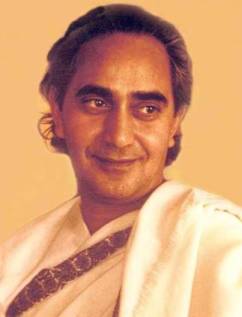|

|
Swami Rama on Meditation Posture
Swami Rama - Meditation is a journey without movement.
In the external world you have to move in order to go ahead, in
meditation you donít move, yet you attain. First thing you should learn
is how to be still physically. Take one month for stilling the body. You
will find that you are able to easily arrest the twitching, tremors, and
jerks, of your body.
When the body is still, you will find great joy and confidence. Learn to
enjoy that stillness. No matter what joys you have experienced so far,
the highest of all joys is stillness.
Learn to sit in a quiet and calm place every day at the same time with
determination. Learn not to move, yet remain comfortable. Ask your mind
to make the body still. There should not be any strain or rigidity in
it.
If you know how to sit still for some time, then you will be able to
make your breath serene. Without serene breath and a tranquil mind,
there is no spirituality. Why do we make the body still, the breath
serene, and the mind calm? We do it so they will not disturb us.
Make a mudra with your fingers by gently touching the thumb to the index
finger, then place the hands over the knees. This mudra, or gesture,
creates a circuit in the body that prevents the outward dissipation of
your energy.
Keep your head, neck, and trunk straight, and then gently close your
eyes and mentally observe the stillness of your body. Your body may
begin tilting forward. Your inner feelings and frustrations cause your
body to move.
The first few days you should learn to watch the stillness. Enjoy the
stillness. Great joy will spring out of stillness.
Therefore, the first step is to be still. I assure you, you will enjoy
it. Power is in stillness as much as in movement.
You will have to choose a posture for yourself. The posture that you use
for meditation should be one in which you are comfortable and steady,
and one that allows you to keep the head, neck, and trunk aligned.
There are a few traditional meditation postures. Sukhasana (easy
posture) is the simplest cross-legged posture for sitting on the floor.
If your legs are flexible, you may find swastikasana (auspicious pose)
more comfortable. It is not advised to use padmasana (lotus pose),
because it is not possible to apply mula bandha (root lock) in this
posture.
The finest of all postures for meditation is called siddhasana
(accomplished pose). In this pose, if you gently and gradually practice
it, you will find that your body becomes like a statue. The accomplished
pose should not be used by beginners.
Whichever posture you are using for meditation, from the very beginning
you should learn to apply mula bandha. You have to contract the anal
sphincters and hold the contraction, until your posture is applied.
Related Swami Rama Articles:
Swami Rama on
Mindfulness and Attention
Swami Rama on Teaching Meditation to Children
Swami
Rama - There is no instant method of Meditation
Swami Rama Story - His Guru Saved him from Dying (opens in new Window)
^Top
Back to What is Meditation |
|
